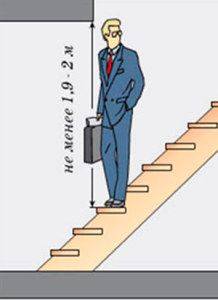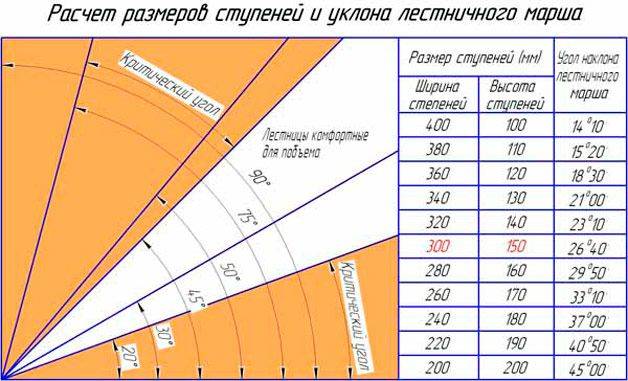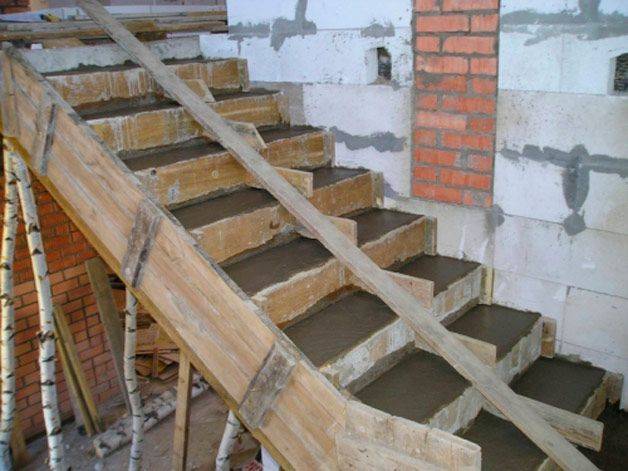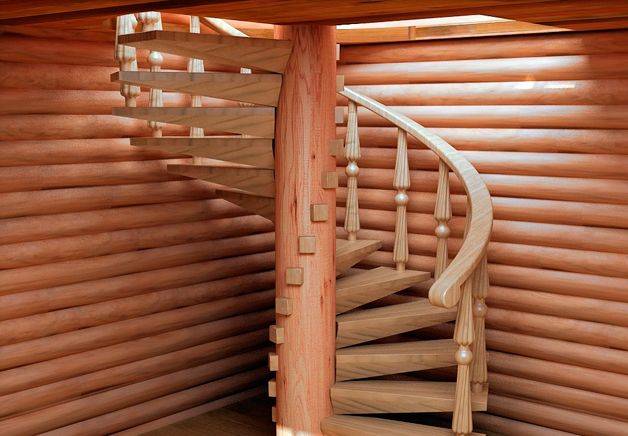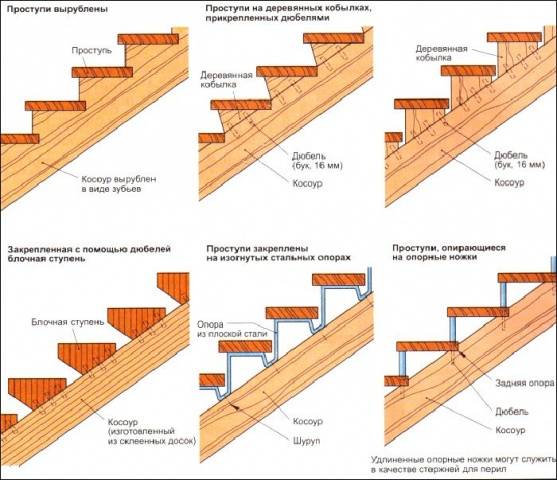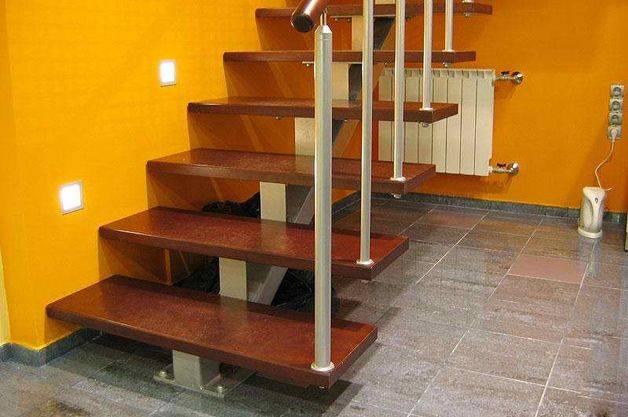Content
Each owner of a private yard gets a cellar. It is dug under the house, garage, shed, or just on the site. However, in any location, in order to get inside, you need a staircase to the cellar, and it is very reliable and convenient. You will have to walk up the steps with a load. Perhaps children or the elderly will go down into the cellar. The ladder should provide a safe and comfortable descent without taking up unnecessary space inside the cellar.
Basic requirements that should be adhered to when calculating the dimensions of the stairs
So, the cellar is located in the garage, under the house or on the site; to descend inside, you will need a convenient staircase. The simplest for basements is considered to be an attached structure, but it is not possible to go down or go up comfortably along it. But you still have to carry a load with you, for example, potatoes or canned goods. The best option is a flight staircase. If the size of the cellar allows, then it is better to dwell on this particular option.
Having decided on the model, you should not immediately start construction. First, they calculate the stairs, adhering to the following rules:
- The width of the march depends on the dimensions of the cellar. There are no special requirements for this parameter, but too narrow a structure cannot be constructed. Typically, the width of the staircase to the cellar ranges from 700 to 900 mm. A person should freely walk up the steps with a bucket of potatoes or other cargo.
- The correct clearance calculation provides exactly the very comfort of climbing stairs. This parameter means the distance from the steps to the cellar ceiling. Always measure the narrowest section. The distance from the bottom step to the ceiling should be 200 mm more than the height of the person. When building a new cellar, a standard clearance of 2 m high is made. If you make the clearance less than the norm, you will always have to climb out of the cellar bent down the stairs so as not to hit your head on the ceiling.
- The second important indicator of a comfortable descent is the slope of the stairs. It can be in the range of 22-75about... On a steep incline from 45about put only ladders in the cellar. On flights of stairs, a more gentle descent is made. The less the slope, the more comfortable it is to move along the march.
- A comfortable step width is considered within 300 mm. A step that is too narrow or wide will cause discomfort to the person while walking.
- The step height parameter is 150-200 mm. Moreover, they should all be located at the same distance from each other. Only the bottom and top step can be offset. You cannot do a lower height, as the step will become more frequent, which will affect fatigue while walking. With a higher height of the steps, you will have to strongly lift your leg.
- The number of steps depends on the length of the staircase itself. It is not difficult to perform independent calculations here. The length of the ladder is taken and divided by the height of the step. If the result is, for example, 16.6 pieces, then one step above or below can be made with an offset.
Adhering to these recommendations, it will turn out to build a comfortable staircase. To help the developer, the photo shows a table of calculations for a flight of stairs.
What material to make a staircase into the cellar
There are different options for making basement stairs, and they all differ in the choice of material. It will depend on this: how easy it will be to build a structure, what its final cost and service life will be.
Wood
The easiest way is to build a staircase with your own hands from wood, since this material is best processed. The only drawback is the shorter service life of the structure, in relation to analogs made of metal or concrete. There is always high humidity inside any cellar. The wood begins to become covered with fungus, and over time it acquires a rotten structure. A wooden staircase impregnated with an antiseptic and opened with varnish or paint will last a little longer. However, it is desirable to give preference to such a design in the presence of the most dry cellar.
Metal
The golden mean between wooden and concrete stairs is metal structures. For their manufacture, pipes, an angle, a profile or a channel are used. The steps are cut from sheet steel 3-4 mm thick.
A metal staircase to the cellar is welded from cut blanks. The construction turns out to be durable and able to serve for many years. However, metal is also afraid of dampness. Over time, the staircase begins to destroy corrosion, that is, the familiar rust appears. The steel structure will have to be tinted at least once every three years.
Concrete
The most reliable and durable is a concrete staircase, but it takes up a lot of space and is only suitable for a large cellar. It is very difficult to make such a structure. Firstly, the manufacture of formwork will be required. Secondly, in order for the structure to be durable, it must be well reinforced. And the biggest challenge is working with concrete. You will need to make more than one batch, and all this solution must be manually lowered into the cellar in order to fill each step.
Despite a bunch of difficulties, concrete is not afraid of dampness, and the reinforced concrete structure will gain strength every year in the cellar. The only drawback is the abrasion of the concrete while walking. But it is unlikely that a person will erase them in his entire life. As a last resort, the march can be painted or tiled, but not slippery.
The video tells about a concrete staircase:
Options for arranging the descent into the cellar
Now we will look at a photo of stairs to the cellar, and a brief description of their manufacture. In general, such a structure is designed at the stage of building a house or garage. But, if the cellar was not provided earlier, now it is necessary to correct the situation.
Screw design
If the hole in the cellar is small, then the ideal option would be a spiral staircase that takes up a minimum of free space. For the manufacture of a structure, wood or metal is suitable. Even a combination of these two materials is allowed. Let's say the base is made of steel, and the steps are made of wood.
The spiral staircase consists of two main parts:
- The core is the base. All the steps will twist around it. The ideal solution is to use a steel pipe for the rod.
- The second part of the design is the steps themselves and the supporting flanges.
Railings are an integral part of the helical structure, although in some cellars they can be dispensed with.
The helical structure is not easy. Here you will need to develop a complex project with precise drawings. In the absence of even the slightest experience, the manufacture of a screw structure must be entrusted to specialists.
Construction on stringers
Now we will look at how to make a staircase to the cellar with our own hands on kosoura. This option is the simplest and most affordable for an inexperienced person.The best option is a staircase with two or three kosoura. In the second version, additional strength is provided due to the central element.
For marching on kosoura, there are two ways of attaching steps:
- If the kosour is made of a wide board, then triangular notches are made to fasten the steps.
- In the second case, filly are attached to the end of the stringers. The steps will rely on these additional elements.
If a decision is made to make a structure without filly, then in addition to the width of the board, attention should be paid to the type of wood. Stringers must maintain their strength throughout the entire life of the ladder. It is best to use oak board or beech. The structure of the wood is resistant to heavy loads and tolerates dampness well. Boards must be chosen even without a single knot.
For the manufacture of the steps themselves, a board with a thickness of 50 mm is used, provided that the width of the march is 0.9-1.1 m. In general, when carrying out calculations, they adhere to the indicator at which the thickness of the step is taken twenty times less than the width of the stairs. Deviations are allowed only in the direction of increasing thickness. However, at the same time, the mass of the structure itself also increases. This means that the stringers are made from a board with a large section.
The staircase is fixed to the vertical posts, which are firmly bolted to the concrete floor of the cellar with anchor bolts. Railings are optional, but necessary. They are installed at a height of 800–900 mm from the steps.
The video provides an overview of the stairs on the kosoura:
Bolt-on design
The technology for making staircases on the bolts came from Germany. Now she is gaining great popularity in our country. A special feature of the design are the steps connected by bolts from the inside. At the same time, they seem to be pulled together with each other. The steps are fixed to the bearing wall with a special pin. So it is called bolts.
Immediately it is necessary to determine the merit of the march on the bolts. First, the design is easy to install. Secondly, the strong mount ensures the reliability of the structure. Although the opinions of experts in this regard differ. Some talk about the lack of strength of such a descent for the cellar, others say the opposite. But the last word remains with the owner of the cellar.
The stairs to the cellar can be made of two types:
- Suppose the width of the march is limited to 1 m, and boards with a thickness of 60 mm are taken for the step. The supporting element of this structure from the outside is the wall. From the inside, the steps are pulled together with bolts. The railings themselves are attached only to the body of the stairs, and do not require additional support.
- If the march to the cellar is fastened with bolts from the side of the wall, then the supporting handrail acts as a support, as well as the step ties themselves. For such a structure, a board with a thickness of 50-60 mm is used. The main handrail is held in place by the handrail posts.
The staircase to the cellar can be installed on bolts without a support wall. With an increase in the width of the march, thicker boards are used. Naturally, this increases the cross-section of all other elements of the staircase.
Conclusion
When making a staircase to a cellar yourself, do not be in a hurry. A poorly planned structure will turn out to be uncomfortable for walking, and incorrect calculations can lead to the collapse of the march.
